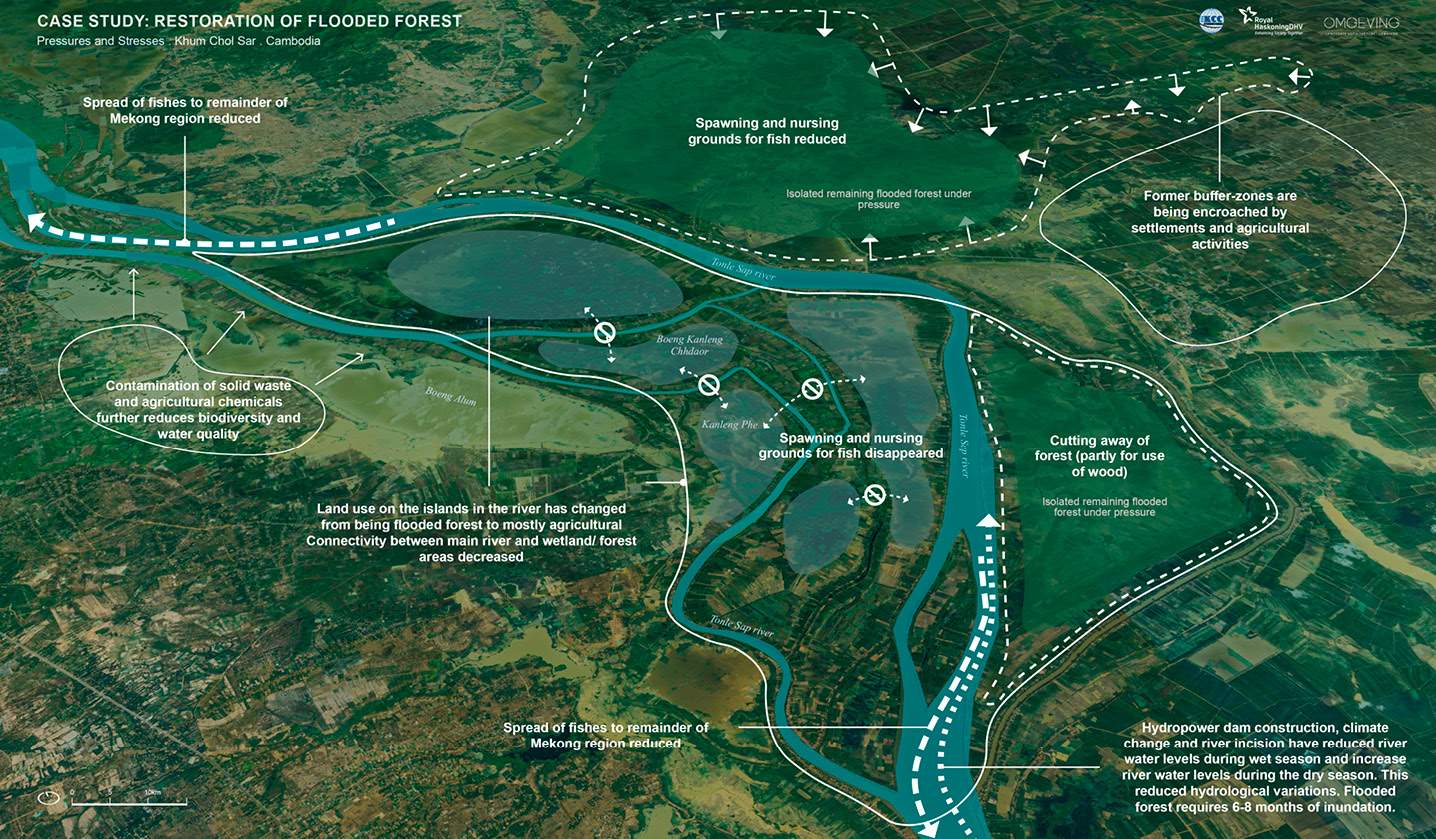Stress & Pressure
Uncontrolled encroachment of the flooded forest has led to declines in fish populations and reduced income from fishery. The conversion of flooded forest to agricultural land has destroyed the vital breeding grounds and nursery habitats for fish. Subsequently, fertilizers and pollutants are used on the converted lands, further deteriorating the water quality and further threatening the fish population. Furthermore, secondary causes for the local decline in the flooded forests and fish populations are forest fires and illegal fishing. The impact of low flows on rice and reduced income from fishery has further worsened the situation because to increase or maintain income, additional land is being converted for agricultural use.
Since 2018, approximately 10% of the flooded forest in the local area has vanished. There has been an estimated decline of 10-30% in fish catches during the same time period. On a larger scale, the loss of forest in the Mekong region is even more significant, leading to a staggering estimated decline of almost 90% in fish catches over the past 20 years.
On a larger scale, hydropower dam construction, climate change, and river incision have reduced river water levels during the wet season and increased them during the dry season, reducing hydrological variations. Parts of the original habitat of the flooded forest have, therefore, become unsuitable because the flooded forest thrives under certain months of inundation.
